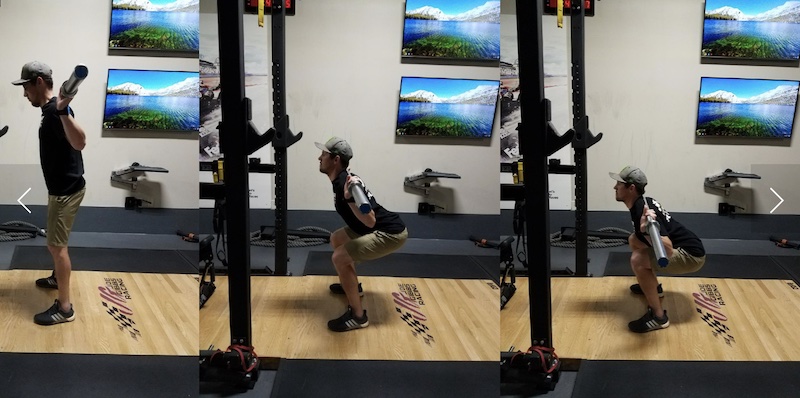Share This Article
Here is the back story on this guy Seiji… Seiji Ishii trained Andrew Short, Jason Anderson and is currently training Filthy Phil Nicoletti. He is what I call a “Red Neck Asian”, but is one of the smartest trainers I have ever met. He hails from Austin, Texas and has trained and guided me for several years. My fitness has been a huge asset in my ability to test for several consecutive days and all of that credit goes to this guy. He will be helping me test some products for you off-road adventure guys and will be giving us all fitness tips. But just the tip.. Without further adieu here he is, Coach Seiji…
OK, so not all these blogs can be vague and esoteric…the public demands practical information, I know!
I get asked a lot, “if you could only do one lift that aids in everything, what would it be?” I always say either dead lift or back squat. The kings of lifting movements, IMO. Yes, that is two lifts but man, I can’t split them up. So…here’s my pointers for the Back Squat as being proficient here allows a much cleaner transition to the Dead Lift in my experience.
FORM over LOAD. Always. Listen to your body and heed even the tiniest warning. ALWAYS. OK read on and take your time mastering the movement.
The classic back squat has reigned as one of the kingpin exercises since the beginning of strength training. Squatting engages muscles from the shoulder girdle down, reinforces core stability, utilizes the muscular and neurologic chain from the ground up (closed kinetic chain), reinforces holding body tension and develops effective hip extension-all serious components to riding a dirt bike effectively. Some view squats as an injurious undertaking, but I view not being able to squat correctly as exposing oneself to injuries. Common sense dictates that form should be mastered first and loads gradually increased, only with this form intact.
Key components:
- Core to extremity muscle engagement. The order of muscle engagement is from core outward. Abdominal and back muscles should be tightened before hips, hamstrings and quadriceps.
- Shoulder to hip relationship should be maintained. Envision your shoulder joint, spine and hip joint from the side. Draw a line through those structures; everything about this line of stability remains intact. This line tips forward from the shoulder and down and rearward at the hip, but nothing else changes. DO NOT give this up to get lower!
- One joint theory. This is a hip extension exercise. This means the “one joint,” the hip joint, should do all the rotation in that area. DO NOT create other “joints” by moving segments of your spine. This particularly relates to the low point of your squat!
- Tunnel theory. The start position is the beginning of the “tunnel.” If this is correct and the end position (bottom of squat) is correct, then you can punch it through the “tunnel” without much direction. Same goes for the bottom of the squat to the top again. So, if the top and bottom positions are correct, little “steering” in between is required.
Maintain the rules above with these positioning cues:
- Feet slightly wider than shoulder width, pointed straight or very slightly rotated outwards.
- “Screw” your feet into the ground, in the outward direction. Your feet shouldn’t actually move but that “wind up” tension from the hip should be there to stabilize your hip joint and drive the knees out during the movement.
- Bar rests below your cervical spine, but above your shoulder blades.
- Maintain neutral cervical spine (look forward, not up).
- Load heels first to primarily engage hips, once mastered you can more evenly load the feet.
If all the rules and cues above are applied, it’s difficult to do a squat incorrectly. The most important things to maintain are the points related to the back and spine. Safety will be preserved and you will be reinforcing core stability and movement patterns that will aid you in all athletic endeavors.

